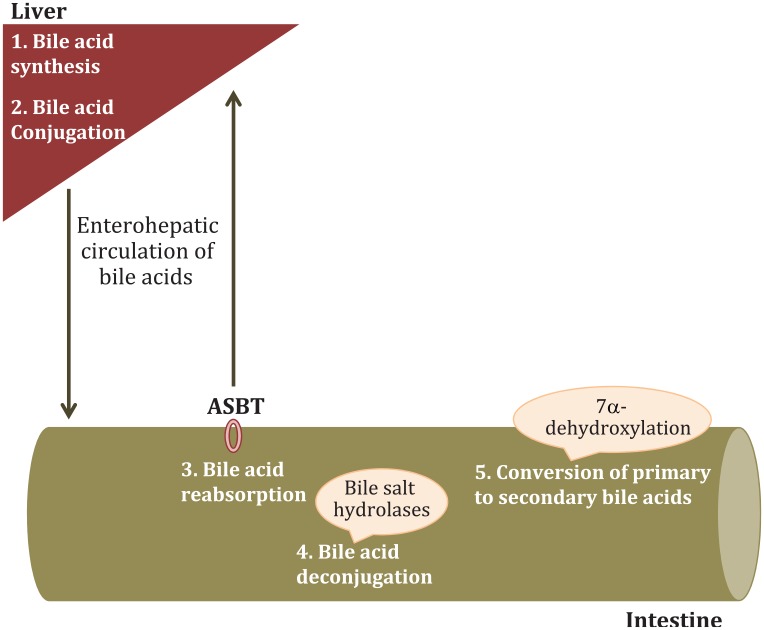Figure 2.
Aspects of bile acid homeostasis that are regulated by the intestinal microbiota. The rate-limiting enzyme for the classical pathway is cholesterol 7α-hydroxylase (CYP7A1) whereas the first enzyme for the alternative pathway is sterol-27 hydroxylase (CYP27A1). The expression of both of these enzymes, along with other enzymes involved in the biosynthesis of bile acids (e.g. oxysterol 7α-hydroxylase; CYP7B1, acting in the alternative pathway), is regulated by the intestinal microbiota. In humans, primary bile acids are conjugated with glycine or taurine in the liver. The synthesis of taurine is regulated by the microbiota and so is the first enzyme of the bile acid conjugation cascade (bile acid acyl-CoA-synthetase). In the terminal ileum, microbiota regulate ASBT expression, ultimately determining the bile acid reabsorption rate. Bile acids can be subsequently deconjugated by bile salt hydrolases and ultimately escape reabsorption by ASBT. Deconjugated primary bile acids can be converted to secondary bile acids in the colon. The enzyme responsible for the 7-dehydroxylation that converts primary to secondary bile acids is expressed in a small number of intestinal microbiota (and not the host) that belong to the Firmicutes phylum (Clostridium clusters XIVa and XI and Eubacterium genera).
CYP7A1, cholesterol 7α-hydroxylase; CYP27A1, sterol-27 hydroxylase; ASBT, apical sodium-dependent bile-acid transporter.

